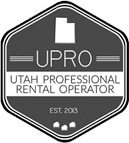Frequently Asked Questions (FAQ)
Q: How do you screen tenants?
A: Thorough tenant screening is the cornerstone of a positive property management experience. Our in-house screening process integrates technology with traditional “landlord references” to ensure that we place qualified tenants in our properties. We comply with all federal and state laws governing applicant screening. Click here for details
Q: How do you handle difficult tenants?
A: As a landlord, it is your responsibility to provide safe, secure and clean housing to tenants, but in some cases you will have to deal with difficult tenants that can be extremely time consuming and very costly for landlords. Examples of these difficulties are: Constant late tenant payments or constantly asking for more time with rent payments, unauthorized persons or pets on premise, Tenant damage to the premise, threatening or abusive behavior from the tenant or other tenant behavior that negatively affects the rest of your tenants or neighbors. Having a strong lease is key in making sure you are able to manage your investments and also deal with difficult tenants if needed. When dealing with problem tenants, adhering to the terms of the lease is imperative. Penalty fees, 3-day notices to comply or vacate and 3-day notices to pay or quit are the strongest tools in the landlord toolbox when it comes to problem tenants. We also want to emphasize that if you are going to use any of the above notices, that you must be willing to follow through with the terms of the notices.
Q: How do you handle tenant evictions?
A: We contract with a very good eviction attorney that is always ready to go. As we say in the business, bad things can happen to good people. Evictions are the most difficult parts of being a landlord but at the end of the day, you must act to protect your investment and business. Once terms of the lease are in violation and the tenant has not worked with us, we hand over documents to our attorney. The work we did on the front end of the lease(detailed application, identification, contact info) makes it much easier for the attorney to process the case. Once the lawyer has the case, and we have done everything correctly, we will expect to attend a court hearing and, in most cases (as long as we have done our part correctly) the judge will give an order of restitution. This in effect forces a tenant to vacate the property. We then contact a constable and have them serve the vacate order.
Q: How do you handle tenant late payments?
A: Dealing with tenant payment issues is easily the largest problem faced by landlords and one of the biggest reasons we get called in to help. Avoiding payment issues in the 1st place starts with a detailed initial application. The more detail you have on the initial application, the easier things can be later if issues do arise.When we have a late payment situation. We will 1st, Immediately add late fees to the tenant ledger. 2nd, we add any posting fees that are included on the lease. 3rd, we fill out and deliver a 3 Day Pay Or Quit notice to the tenant. The Pay Or Quit is one of the most powerful tools in the landlord’s toolbox when used consistently. Being consistent in the use of the pay or quit is essential when it comes to tenant payment behavior. Using the system consistently drives the desired outcome.
Q: How do you handle tenant move outs?
A: • Once a tenant gives notice to vacate, an exit inspection is scheduled for the rental unit on the next business day after the move out date.
• The property is set to pre leasing in our system. This allows the property to be listed as soon as the property has been verified as vacated by the outgoing tenant. Lease rates are also looked at to see if an increase is in order.
• Once vacated, the exit inspection is conducted with all tenant damage identified. The entry inspection that was carried out at lease up is used to verify if issues present are tenant responsible or are pre existing. The inspector will also identify wear and tear issues that will need to be addressed. Wear and tear issues are owner responsibility.
• Once inspection is complete, a work order is created to address any tenant issues or wear and tear items. If the tenant left the unit rent ready then this step is skipped(this rarely happens).
• Turnover crews will be dispatched to the property in order to effect repairs listed on the work order.
• Once turn over work is complete, a tenant responsible invoice is submitted to the office and applied to the tenant ledger for move out billing.
• After any invoice totals are applied to the tenant ledger, the move out is completed and security deposits are applied to any charges due. A security deposit disposition is created and a check printed for any deposits still owed to the tenant. These are sent out to the tenant. Utah state law requires that Security Deposit Dispositions be carried out within 30 days of lease end or vacate date Fines of up to 3 times monthly rents can be charged to owners that do not get security deposits out within the 30 days required by state law.
• Once the house is rent ready, showing are allowed and potential tenant prospects begin to view the property.
• Owner will receive weekly reports on viewing and feedback left by prospective tenants.
• Once a tenant prospect decides to apply, they are run through our background screening system. Many applicants fail to meet our minimum requirements and are declined.
• Once an applicant passes the background check AND has verifiable sufficient income for the property in question, a lease up packet is sent to the applicant. They are asked to sign the packet and pay any deposits required.
• Once deposits have been paid by an applicant then a move in date is set for the property.
• Before moving in, the leasing agent performs an entry inspection of the property with photos.
• Tenants are able to move in and lease enforcement activities begin(rental payments etc).
Q: How do you handle maintenance emergencies?
A: ASPM has a 24 hour tenant maintenance hotline for after hours and holiday emergencies. Once a call is received by the call center, the caller is verified to have a true emergency(imminent threat to lif e or property). If a true emergency, then the call is then forwarded to a maintenance technician. The maintenance technician will arrive on site, assess the situation and effect the minim emergency repairs needed. Once the emergency is under control, the technician will leave the scene and then go back to the unit during regular business hours to complete whatever repairs are needed at a c more cost effective labor rate.






